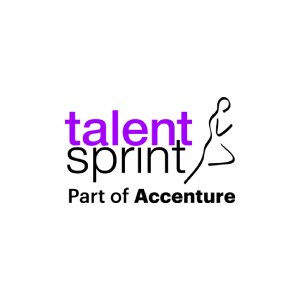How to Make Smarter, Faster Decisions with Data-Driven Leadership?

In today’s hyper-competitive business world, leaders must make decisions quickly and accurately. Intuition alone won’t help markets shift fast, customer needs evolve faster, and disruption can strike at any moment.
Imagine a retailer launching a new product. Marketing sees strong demand in cities, but the supply chain, which operates in silos, stocks suburban outlets. Finance, using outdated forecasts, misallocates budgets. The outcome? Shortages in high-demand areas, surplus elsewhere, and wasted spend. No surprise then that 80% of leaders say data silos block smooth collaboration.
The lesson: even the best strategies fail without unified, data-driven decision-making
This is where data-driven leadership becomes a game-changer. By harnessing the power of data and analytics, leaders can cut through uncertainty, uncover hidden opportunities, and anticipate risks before they surface.
What Is Data-Driven Leadership?
Data-driven leadership combines leadership practises, change management principles, and data analytics within a continuous improvement framework. This organisational competence connects processes, products, services, and customers through empirical evidence rather than gut feelings.
The core principles include:
- Evidence-based decision-making: Leaders rely on empirical data rather than intuition, which improves accuracy and reduces bias
- Agility and responsiveness: Regular data analysis helps organisations anticipate disruptions and adjust strategies
- Transparency and inclusivity: Data-driven leadership works best when decision-makers at all levels can access relevant information
Data-driven leadership connects business purpose with business effect. This transforms how organisations prioritise resources, make decisions, and execute processes.
Also Read: What is Digital Leadership?
How is it different from traditional leadership?
Traditional leadership often depends on intuition, experience, and conventional wisdom. Data-driven leadership takes a different approach:
| Traditional Leadership | Data-Driven Leadership |
| Relies on gut feelings and past experiences | Utilises various information types and sources for strategic analysis |
| Decisions based on intuition | Decisions backed by evidence and analysis |
| Static vision | Dynamic vision that adapts based on up-to-the-minute insights |
| Vulnerable to cognitive bias and group-think | Steers teams away from opinions and self-censorship |
Organisations that embrace data-driven leadership can spot potential blind spots in management styles. They can use feedback from multiple sources and understand team dynamics better.
Tools and Technologies Driving Data-Driven Decisions
The rise of DDDM has been powered by rapid progress in how data is collected, stored, processed, and visualized. Some of the most impactful enablers include:
- Big Data Frameworks: Platforms like Hadoop and Spark that manage and analyze massive datasets.
- Machine Learning & AI: Advanced models that detect patterns and generate accurate predictions.
- Cloud Computing: Flexible, scalable resources that make high-end computing accessible to all businesses.
- Business Intelligence Tools: Solutions such as Tableau, Power BI, and Looker that convert raw numbers into actionable insights.
- IoT & Smart Sensors: Devices that deliver real-time data from physical operations and environments.
Together, these technologies enable organizations to evolve from descriptive analytics (understanding what happened) to predictive (anticipating what will happen) and ultimately prescriptive analytics (deciding the best course of action).
How Data-Driven Leadership Enables Smarter, Faster Decisions?
Organisations that use evidence-based approaches gain clear advantages in making faster, better decisions.
Clarity through insights
Evidence-based findings help turn raw information into practical conclusions that guide action. Organisations can now:
- Spot emerging trends and patterns
- Make more accurate predictions
- Base decisions on solid evidence
To name just one example, Walmart's AI-driven inventory system analyses stock data from all stores. This system keeps optimal inventory levels by cutting overstock and preventing shortages. The result? Higher customer satisfaction.
Reduced risk through evidence
Strategies backed by data work better than gut-feel decisions. Building strategies on solid data helps because:
- Teams catch potential risks early and save resources
- Evidence builds confidence in decisions
- Teams test assumptions before full rollout
JP Morgan Chase shows this approach well. The company uses predictive analytics to spot financial anomalies and flag risky investments. This helps prevent fraud and cuts financial losses.
Agility through live feedback
Speed matters in today's ever-changing markets. Evidence-based findings let companies adapt quickly to change. A logistics company that watches weather forecasts can reroute shipments early if delays look likely. This keeps deliveries on time and customers happy.
Uber does something similar. The company processes live data about ride requests and traffic to match riders with nearby drivers. This cuts wait times, even during peak hours.
Team arrangement
Data encourages internal unity by connecting strategic goals with department targets. This unified approach:
- Removes information barriers between teams
- Creates common ground for discussing results
- Makes teams work better together using shared insights
Better team unity improves how departments work together. This builds a culture where data guides decisions. Making data available to everyone lets teams learn how to work with insights in their daily tasks.
How to Build a Data-Driven Leadership Mindset
A data-driven leadership mindset needs specific skills and careful practises. Leaders must move away from gut feelings and embrace evidence-based decisions that show clear results.
1. Start with the right questions
Better questions lead to effective data-driven leadership. Many decision-makers make mistakes by using existing data that misses the real issue. The right approach starts with the needed decision and works backward to find relevant data. Leaders should know the difference between:
- Factual questions - predictions you need (e.g., "Which products will customers return?")
- Counterfactual questions - results with and without specific actions
2. Identify reliable data sources
Data quality directly shapes decision quality. Leaders should learn analytical skills to spot reliable data sources. They need to understand data history its origin, collection methods, and any changes made. Good comparisons need consistent calculation methods across time periods, and absolute values should come with percentage changes.
3. Build a culture of data fluency
Data fluency means knowing how to speak about, understand and use data insights. Yet only 32% of C-Suite executives know how to work with data. This culture needs:
- Leaders who show data-driven decision-making
- Data that everyone can access
- Tools that match different skill levels
- Real projects where employees use their skills
4. Use data visualisation for clarity
Pictures help people grasp complex data quickly. The human brain processes images 60,000 times faster than text. Good visualisation helps leaders:
- Spot hidden trends and patterns in raw data
- Work better together through shared understanding
- Watch key performance indicators live
5. Encourage data-led discussions in leadership meetings
Leadership teams need clear ways to share metrics. They should pick metrics that matter most to business results instead of tracking everything. One trusted data source prevents arguments about whose numbers are right. Simple colour codes (green, yellow, red) show progress toward goals.
6. Invest in tools, dashboards, and training
User-friendly analytics tools help teams understand data without deep technical knowledge. Training should boost data literacy and give employees confidence with data. Smart leaders should add:
- Training that fits different skill levels
- Clear rules for data use and testing
- Groups where people share what they learn
Walmart’s Inventory Revolution: Real-World Power of Data-Driven Decisions
Data-driven decision making rests on a few core principles. It begins with systematically collecting data aligned to business goals. That data is then rigorously analyzed to uncover patterns, correlations, and insights. Finally, these insights guide actionable decisions that are implemented and measured.
Walmart has revolutionized its inventory management by leveraging advanced data analytics. By studying purchasing behavior, seasonal demand, and even weather forecasts, the company optimized stock levels across its 11,000+ global stores.
A striking example came during Hurricane Frances in 2004. Walmart’s analytics uncovered unusual buying trends: along with essentials like flashlights and batteries, sales of strawberry Pop-Tarts surged before hurricanes. Acting on this insight, the retailer strategically stocked more Pop-Tarts in high-risk regions, driving sales while meeting customer needs.
Through predictive inventory management, Walmart reduced out-of-stock incidents by 16% in just one year and cut inventory costs by $1.29 billion. This data-first strategy shows how analytics can enhance both operational efficiency and customer satisfaction.
Final Thoughts
Data-driven leadership is the edge senior executives need to thrive. It’s not just about numbers it’s about transforming uncertainty into clarity and driving smarter, faster decisions that fuel growth. For leaders looking to master this skill, structured learning is key. The Senior Management Program in Business Analytics by IIM Calcutta equips senior managers with the tools, frameworks, and confidence to lead with data. By investing in such a program, leaders can future-proof their decision-making and ensure their organizations stay ahead in today’s competitive landscape.
Frequently Asked Questions
Q1. What are the key steps to improve data-driven decision making?
To enhance data-driven decision making, start by clearly defining the problem, collect relevant data, analyse it thoroughly, develop an action plan based on insights, and evaluate the results. This systematic approach ensures decisions are grounded in evidence rather than intuition.
Q2. How can leaders build a data-driven culture within their organisation?
Leaders can foster a data-driven culture by demonstrating commitment to data-based decision-making, making data accessible across departments, providing diverse analytical tools for different skill levels, and creating opportunities for employees to apply data skills on real projects. This approach helps increase data literacy throughout the organisation.
Q3. What are the essential traits of a data-driven leader?
Key traits of data-driven leaders include strong analytical capabilities, comfort with ambiguity, collaborative communication skills, the ability to empower teams with data tools, and a balance between strategic thinking and execution. These characteristics enable leaders to extract maximum value from data while fostering a culture of evidence-based decision-making.
Q4. How can data visualisation enhance decision-making processes?
Data visualisation transforms complex information into easily understandable insights, allowing leaders to identify trends and patterns quickly. It facilitates collaboration through shared understanding and enables real-time tracking of key performance indicators, making it an essential tool for effective data-driven decision-making.
Q5. What role does asking the right questions play in data-driven leadership?
Asking the right questions is crucial in data-driven leadership. It involves distinguishing between factual and counterfactual questions, focusing on decision-driven analytics, and working backwards from the required decision to identify relevant data. This approach ensures that the data collected and analysed is directly applicable to the decision at hand.

TalentSprint
TalentSprint is a leading deep-tech education company. It partners with esteemed academic institutions and global corporations to offer advanced learning programs in deep-tech, management, and emerging technologies. Known for its high-impact programs co-created with think tanks and experts, TalentSprint blends academic expertise with practical industry experience.



